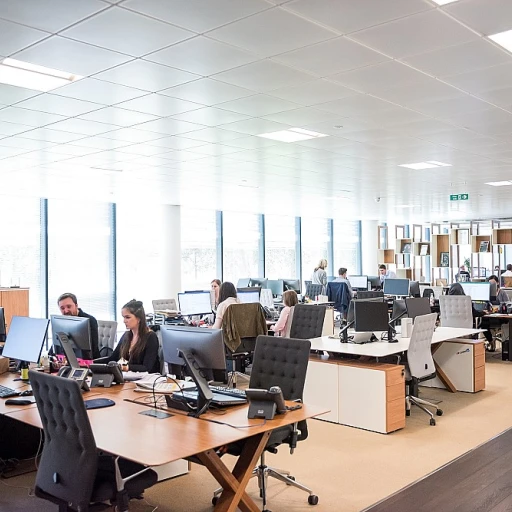Understanding CAM Reconciliations
Key Components of CAM Reconciliation
The reconciliation process for Common Area Maintenance (CAM) expenses in Indian commercial real estate holds significant importance for property managers, landlords, and tenants. At its core, CAM reconciliations ensure that tenants pay an equitable share of the common area costs, as outlined in their lease agreements. Throughout the year, tenants often make estimated payments towards CAM charges, and the reconciliation process is vital to compare these estimate payments with actual expenses incurred.
Implications of Ineffective Reconciliation
Effective CAM reconciliations require an in-depth understanding of the associated charges that contribute to the common area maintenance. Property managers must possess the ability to accurately itemize these expenses and assess them against lease agreements. Any discrepancies in the reconciliation can lead to financial inaccuracies, potential disputes between landlords and tenants, or even erosion of trust among stakeholders. Thus, a well-structured reconciliation process mitigates misunderstandings and ensures transparency.
Breakdown of CAM Expenses
CAM expenses typically encompass a diverse range of costs, such as maintenance fees, utilities, security, landscaping, and repairs. These costs are not exempt from fluctuations over the year, thus making routine reconciliations indispensable. Property owners and managers ought to allocate these expenses correctly, aligning them with the pro-rata share each tenant is responsible for, which stems from the total occupied floor area in relation to the overall commercial property footprint.
For office managers striving for
enhanced efficiency in operations, mastering CAM reconciliations translates into smoother property management and tenant relations. With effective reconciliation practices, misunderstandings can be minimized, leading to more harmonious tenancy agreements and successful property management. The complexities involved in leveraging technological solutions and overcoming challenges in the implementation stage can be further explored to achieve impeccable financial accuracy in CAM processes.
Challenges in Implementing CAM Reconciliations
Hurdles in Implementing CAM Reconciliation Processes
Commercial real estate companies in India often face significant difficulties when integrating CAM reconciliations into their property management systems. These challenges, while varied, impact both smaller enterprises and large property owners, leading to potential discrepancies in financial reporting and tenant relations.
First, the complex nature of lease agreements can pose significant obstacles. Lease agreements typically outline pro rata shares and responsibilities for common area maintenance. However, without clear definitions of cam charges and cam expenses, landlords and property managers often find themselves in disputes with tenants over expected costs versus actual expenditures.
Moreover, the reconciliation process involves high volumes of data and intricate calculations related to common area maintenance. This complexity can easily lead to errors or inaccuracies, which can jeopardize tenant trust and strain landlord-tenant relationships. It's critical that property managers maintain meticulous records and perform regular checks to ensure the transparency and accuracy of reports.
In many instances, outdated or incompatible accounting systems can further exacerbate these issues. Lack of technological integration hampers effective management of commercial property expenses, leading to inefficient reconciliation processes and potentially overlooked cam costs.
To further streamline efficiency, consider exploring solutions aimed at enhancing financial processes.
Read more on streamlining efficiency and financial foresight.
The growing complexity of real estate operations in India underscores the need for robust property management strategies that adapt to these challenges. Collaborating with experienced professionals and leveraging technological tools can help mitigate these hurdles, smoothing the path towards a more accurate and efficient reconciliation process.
Best Practices for Effective CAM Reconciliations
Optimizing Results in the Reconciliation Process
The intricate process of CAM reconciliations requires property managers to adopt best practices to ensure accuracy and efficiency across commercial properties. Understanding these methodologies constitutes a cornerstone for any company aiming to successfully manage shared expenses and provide transparent charge statements to tenants.
- Accurate Record-Keeping: This is essential for maintaining a reliable record of all CAM expenses incurred during the year. Proper documentation enables seamless comparison of projected costs versus actual expenses, facilitating straightforward tenant chargebacks.
- Regular Reconciliation Updates: Conducting periodic evaluations throughout the year rather than annual reviews helps in identifying discrepancies promptly. This approach not only aids in swift issue resolution but also prevents end-of-year surprises for both landlords and tenants.
- Professional Collaboration: Engaging experienced accountants or financial experts familiar with real estate lease agreements can augment the internal team’s understanding, especially when handling complex commercial property reconciliations.
- Standardization of Process: Establishing clear, standardized procedures for reconciling common area maintenance charges aids in minimizing errors and offers a consistent approach beneficial for both property owners and tenants.
- Effective Communication with Tenants: Transparency with tenants regarding pro-rata shares and any adjustments in CAM fees fosters trust and underscores the company's commitment to fair property management practices.
For companies looking to further streamline their operations, integrating tools and techniques from
enhancing workplace efficiency with visual management techniques can prove to be beneficial. Such practices not only contribute to a robust reconciliation process but also elevate overall management efficacy in commercial real estate contexts.
Technological Solutions for CAM Reconciliations
Embracing Technological Solutions for CAM Reconciliation
In the evolving landscape of Indian real estate, efficient CAM reconciliation is a pressing necessity. Many commercial property managers are turning towards technological advancements to streamline the reconciliation process, making it more robust and accurate.
Increasingly, software solutions tailored specifically for property management are being adopted to handle the intricate calculations of CAM costs and expenses. These platforms not only facilitate accurate tracking of maintenance charges but also help in the systematic management of lease agreements and tenant billing. By automating the tedious reconciliation process, property owners and managers can ensure timely and precise calculation of pro rata charges.
Another beneficial aspect of technology in this domain is the ability to store and analyze extensive historical data. This capability aids in forecasting common area maintenance costs and offers insights into trends that may impact future CAM fees. This data-centric approach ensures landlords can make informed decisions, reducing any potential disputes with tenants over reconciliation inaccuracies.
For effective CAM reconciliations, adopting comprehensive digital tools can optimize the workflow. These tools enhance communication between landlords and tenants, enhancing transparency and trust. Furthermore, they align with the commercial real estate industry's shift towards efficiency and accuracy in property management.
To summarize, leveraging advanced technology for CAM charges isn't just a convenience; it's rapidly becoming a game-changer in the maintenance and management of commercial properties across India. As we look to the future, continued innovation and adoption of these technologies will likely shape the standard for CAM reconciliations.
Case Studies: Success Stories from Indian Companies
Success Stories from Indian Companies' CAM Reconciliation
The journey of mastering CAM reconciliations can be illustrated by real-life examples from Indian companies that have successfully implemented the processes, overcoming challenges to achieve financial accuracy.
One notable instance involves a large real estate corporation managing a vast portfolio of commercial properties. Facing high volumes of lease agreements and varying cam expenses across properties, the company initially struggled with managing the complexities of common area maintenance. Through the adoption of a robust property management software, they streamlined their reconciliation process, enabling precise tracking of cam charges and effective communication with tenants. The use of technology significantly reduced discrepancies and promoted transparency with all parties involved.
Another case is an Indian retailer operating multiple commercial outlets. Consistently experiencing conflicts with property managers over cam costs, the retailer sought to improve their reconciliation process. By implementing best practices such as regular audits and detailed tracking of maintenance expenses, they managed to foster better relationships with landlords and negotiate favorable lease terms, which in turn optimized their annual expenses.
Additionally, a real estate investment firm, dealing with a diverse range of commercial properties, invested in training for their team on effective CAM fee management. This training encompassed aspects from the reconciliation process to calculating pro rata shares in complex lease agreements. Such endeavors ensured clearer financial outcomes, enhancing their credibility and reinforcing trust with property owners and tenants.
These Indian companies highlight the importance of adopting strategic solutions and best practices in CAM reconciliations to maintain smooth operational flow, demonstrating how dedicated efforts can lead to substantial improvements in property management frameworks and overall tenant satisfaction.
Future Trends in CAM Reconciliations
Emerging Trends in Common Area Maintenance (CAM) Reconciliation
The discipline of CAM reconciliations within Indian companies is undergoing significant transformation, driven by both innovation and evolving market dynamics. These changes are outlined below, shedding light on future trends expected to shape the reconciliation landscape for property managers, landlords, and tenants alike.
- Automation and AI Integration: The adoption of automation tools and AI technologies is rapidly increasing. These technologies simplify the reconciliation process by enabling real-time CAM charges monitoring and efficient expense tracking. AI-driven solutions promise to accurately handle complex reconciliation tasks, reducing the manual effort required and improving financial accuracy.
- Enhanced Data Analytics: The availability of advanced data analytics tools assists in understanding CAM expenses and costs more comprehensively. These tools offer property managers and landlords the capability to generate actionable insights, optimize expenses, and anticipate future cost trends in commercial real estate properties.
- Emphasis on Transparent Communication: Modern CAM reconciliation practices emphasize the importance of clear communication among all stakeholders, including property owners and tenants. Lease agreements are increasingly reflective of a pro rata basis for charges, ensuring fairness and clarity in cost distributions related to common area maintenance and reconciliation processes.
- Sustainability in Property Management: With growing awareness of environmental impact, tenants and landlords are moving towards incorporating sustainable practices in area maintenance. This shift influences CAM costs, as the management integrates eco-friendly solutions, potentially leading to cost savings through efficient resource utilization.
- Regulatory Changes and Compliance: The landscape of real estate regulations in India is continually evolving. Property managers must stay abreast of regulatory updates influencing lease agreements and commercial property management practices to ensure compliance and avoid legal ramifications.
The dynamic nature of these trends indicates a landscape where the traditional practices of CAM reconciliation are being reshaped. Building a keen understanding of these developments can empower Indian companies to better manage their commercial properties, ultimately achieving more precise financial planning and fostering strong tenant-landlord relationships.

